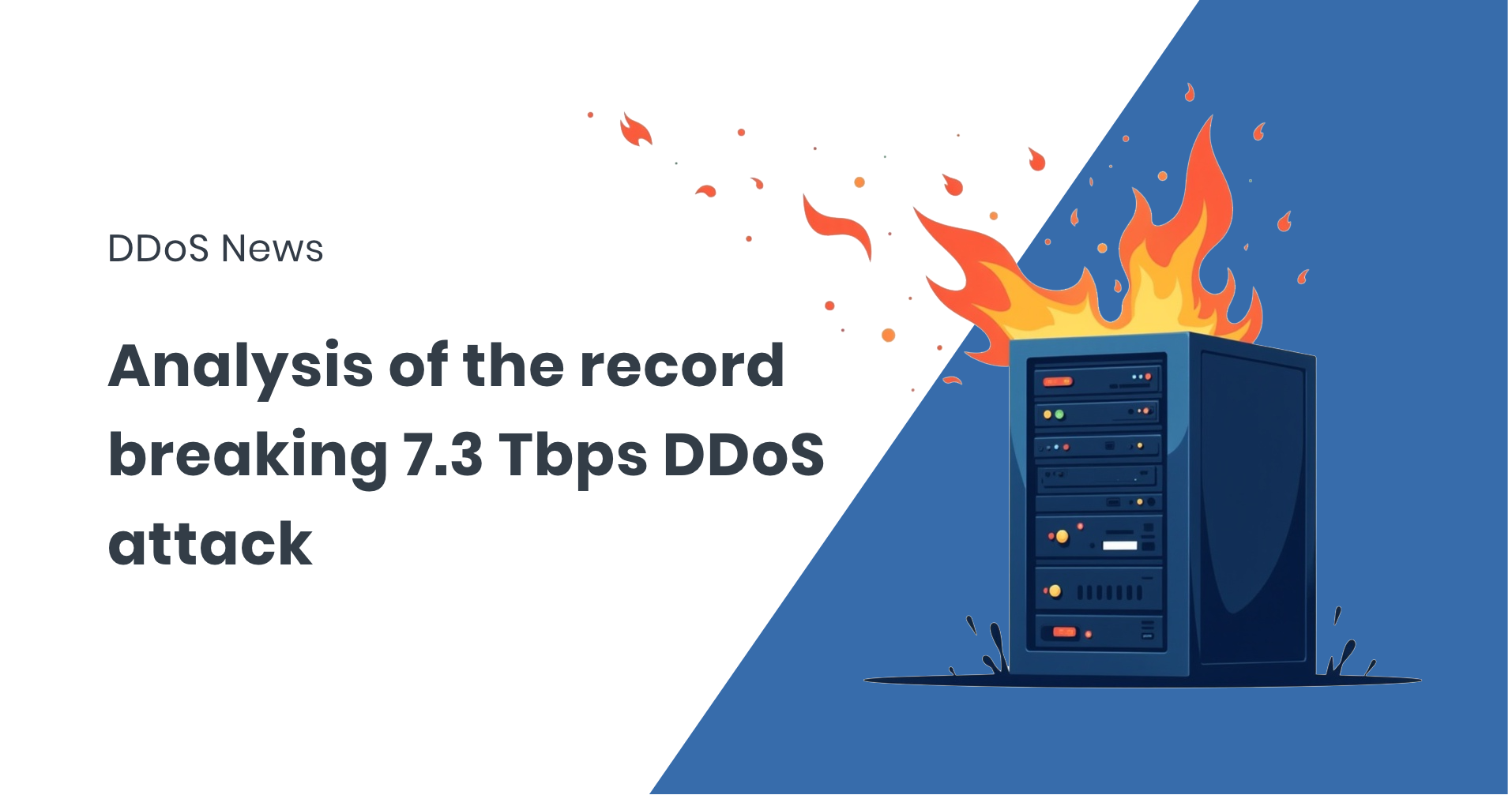
The Internet Just Survived the Largest DDoS Attack Ever—Here’s What You Need to Know
A new milestone in Distributed Denial of Service (DDoS) attacks has been reached: 7.3 terabits per second (Tbps) of malicious traffic launched in a single, ultra-short burst lasting just 45 seconds. The attack delivered 37.4 terabytes of data—equivalent to streaming an entire year of HD video in under a minute.
The victim? A hosting provider. The impact? Minimal—thanks to modern mitigation strategies. But the implications are much bigger.
Infrastructure providers are in the crosshairs
This record-breaking event underscores a clear pattern: hosting providers and internet infrastructure platforms continue to be high-value targets for increasingly aggressive DDoS campaigns. The stakes are growing, and so is the technical sophistication behind these attacks.
Dissecting the 7.3 Tbps attack
This was not just a brute-force volumetric flood. It was a multi-vector campaign. While the vast majority (99.996%) of the traffic came from UDP floods, attackers also used a mix of reflection and amplification techniques via outdated protocols like QOTD, NTP, Portmap, and RIPv1—many of which persist due to unpatched legacy systems.
In total, more than 122,000 unique IPs from 161 countries and 5,400 networks were involved. The majority of traffic originated from Brazil and Vietnam, with significant contributions from China, Taiwan, and the U.S.
Botnets like Mirai played a central role—yet another reminder of how vulnerable IoT devices continue to be exploited at scale.
Real-world scale
To put the numbers in perspective:
- One IP address was hit at 34,500 ports per second.
- In bandwidth terms, it was like downloading 9,000 HD movies in under a minute.
Mitigation strategies that worked
In this case, the attack was successfully neutralised by an anycast-based network infrastructure capable of absorbing global-scale DDoS events. Cloudflare, the service provider in this incident, used a globally distributed system to route and mitigate traffic with near-instant responsiveness.
While Cloudflare’s approach involved kernel-level packet sampling (eBPF), automated rule deployment, and real-time threat intelligence propagation, the broader takeaway is this: defeating today’s DDoS attacks requires automation, real-time analysis, and scale.
Why “low and slow” attacks might be more dangerous
While 7.3 Tbps makes headlines, many of today’s most effective DDoS campaigns are small, stealthy, and smart. These “low and slow” attacks are designed to degrade service performance or exhaust application-layer resources without triggering volume-based alarms.
They’re harder to detect, harder to defend against, and can be just as disruptive as massive floods.
DDoS-as-a-Service: the threat is cheap, fast, and global
Attacks of this size are no longer rare. Multi-terabit-per-second DDoS events have become almost routine. Worse still, they’re widely available via booter and stressor services for less than the price of a takeaway lunch.
That accessibility makes proactive defence more critical than ever.
What defenders need to do
This attack serves as a wake-up call for defenders everywhere. Here’s what matters most:
- Don’t just filter by size—you need to analyse behaviour and intent.
- Automation is key—manual response times can’t match attack speeds.
- Legacy systems remain a weak link—patching and protocol hardening are essential.
- Global threat intelligence sharing is no longer optional.
Final thoughts
The 7.3 Tbps attack is a new benchmark—but it won’t be the last of its kind. As attackers evolve, so must defenders. That means investing in real-time, autonomous mitigation tools and collaborating across ecosystems.
DDoS attacks are getting bigger, faster, and cheaper. But with the right strategy and infrastructure, even the most powerful attacks can be neutralised in seconds—not hours.
About FastNetMon
FastNetMon is a leading solution for network security, offering advanced DDoS detection and mitigation. With real-time analytics and rapid response capabilities, FastNetMon helps organisations protect their infrastructure from evolving cyber threats.
For more information, visit https://fastnetmon.com